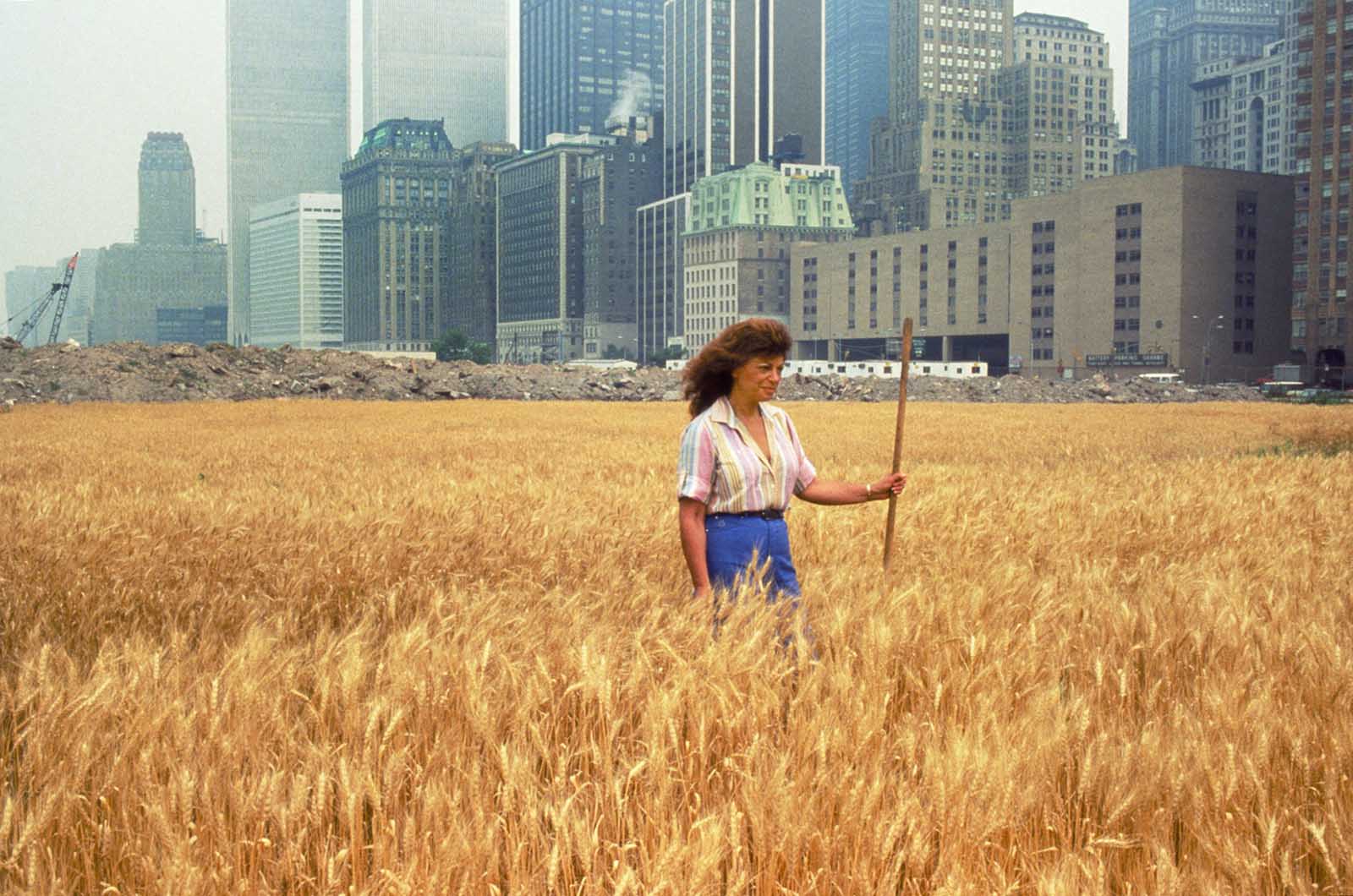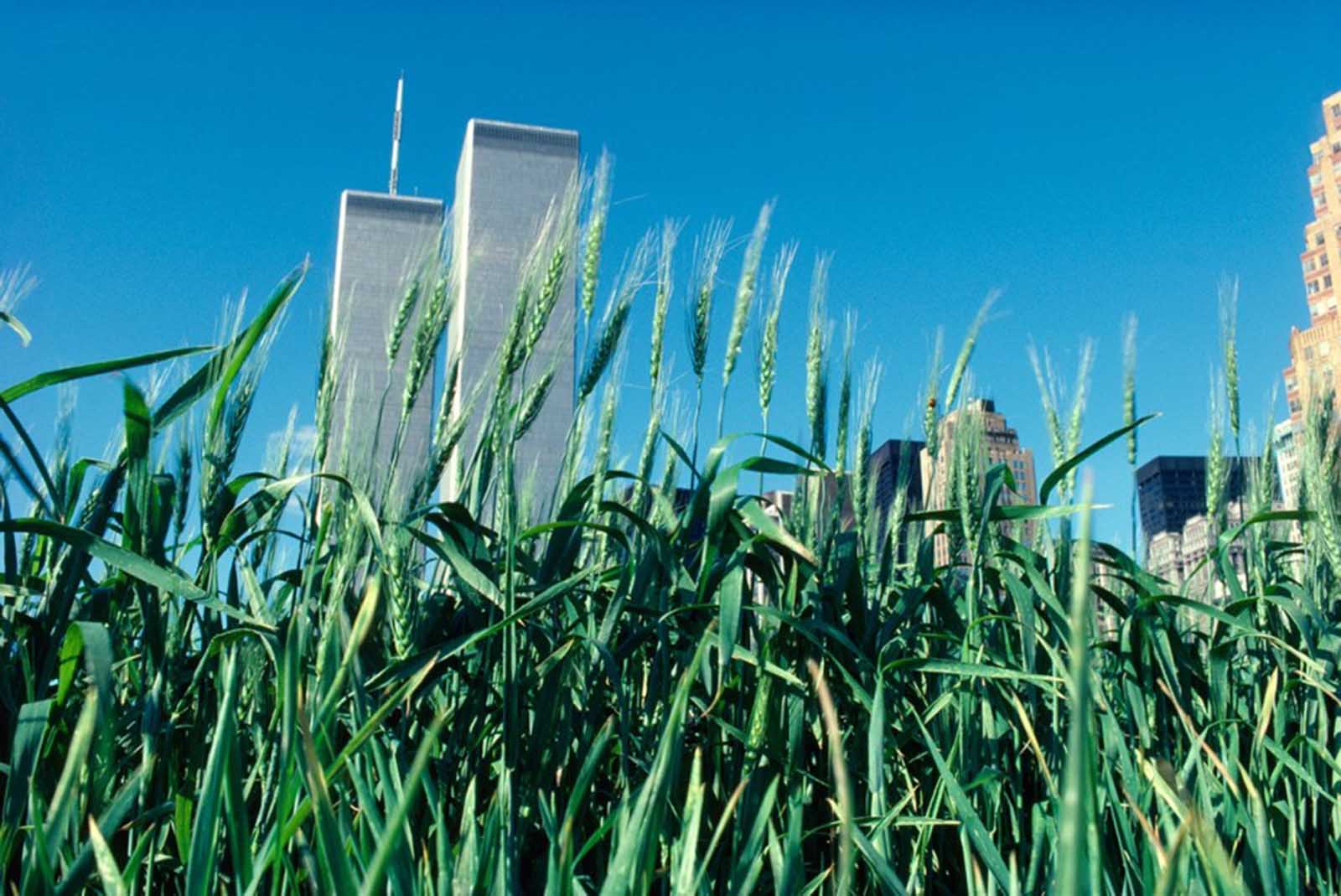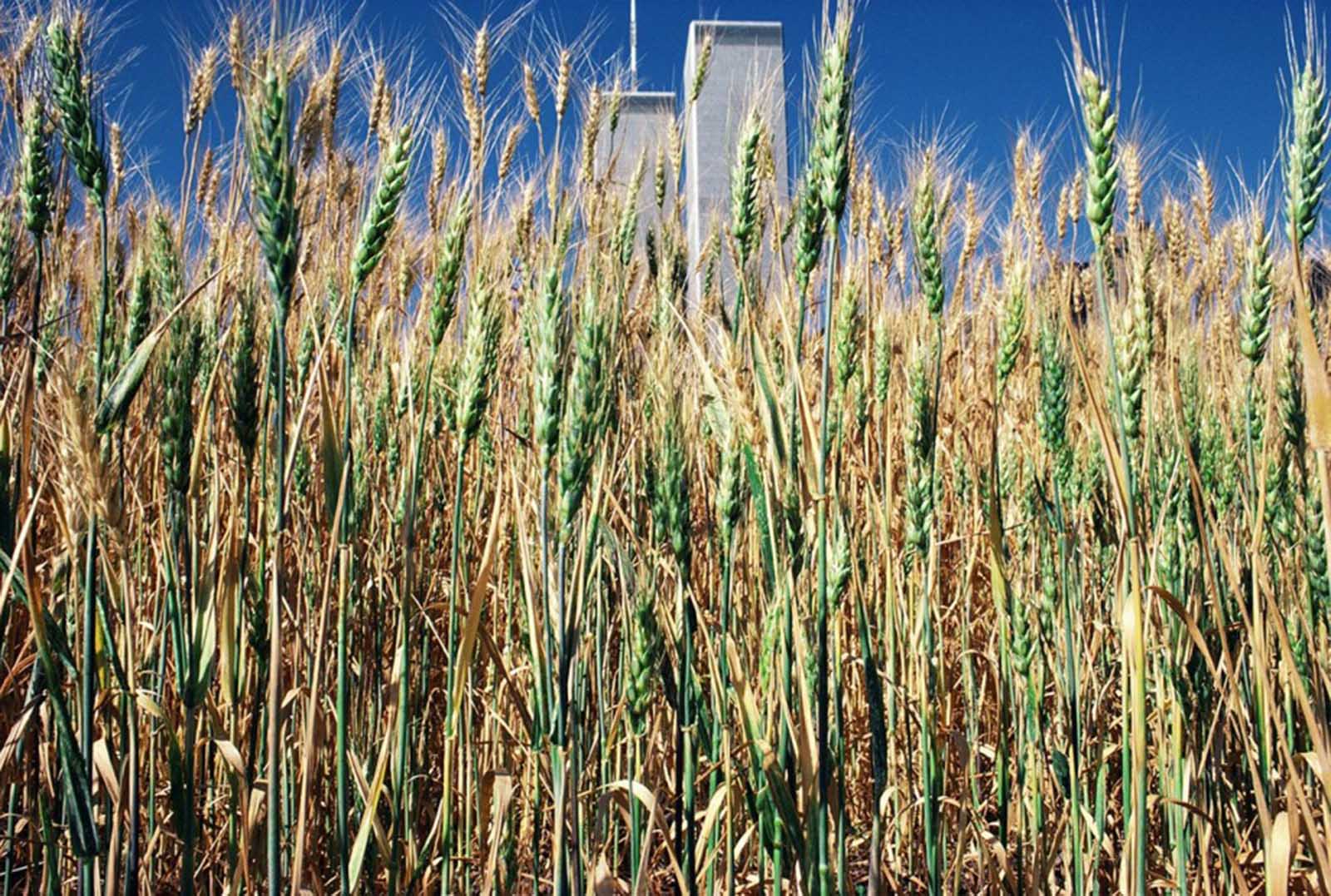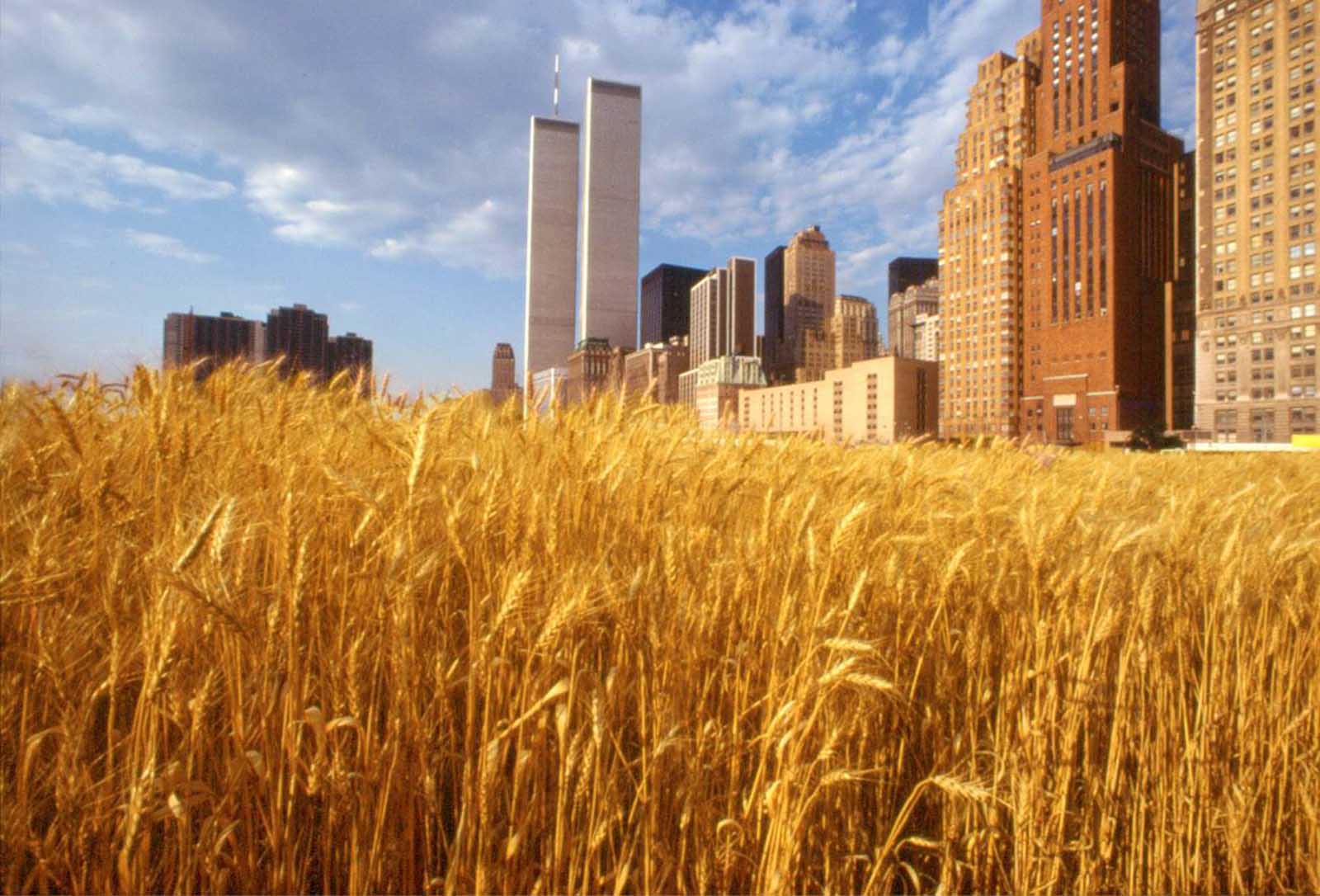New York City isn’t famous for its agriculture. Yet in 1982, artist Agnes Denes cleaned up what was essentially a dumpsite before planting and harvesting a wheat field there. The land, a stone’s throw away from the site of the Twin Towers, and across the river from the Statue of Liberty, was cultivated using dirt that was excavated during the building of the World Trade Centre and became home to 1.8 acres of wheat.

The wheat, which transformed the former wasteland into a glistening field of swaying amber, highlighted the misplacement of human priorities and declining values. It was Agnes’s hope that the glaringly paradoxical nature of a 1000 pound/450 kilogram harvest from land worth $4.5 billion would draw attention to the worldwide mismanagement of resources, waste, world hunger and ecological concerns. The harvest ultimately made its way around the world after the completion of the exhibition entitled “The International Art Show for the End of World Hunger”.

Agnes Denes took a series of photographs over the course of the project to evidence humanity’s negative impact on the earth and the subsequent transformation. The growing wheat field highlighted not only the beauty of the agricultural process, but also conveyed her political message regarding humanity’s questionable values and misplaced priorities.











